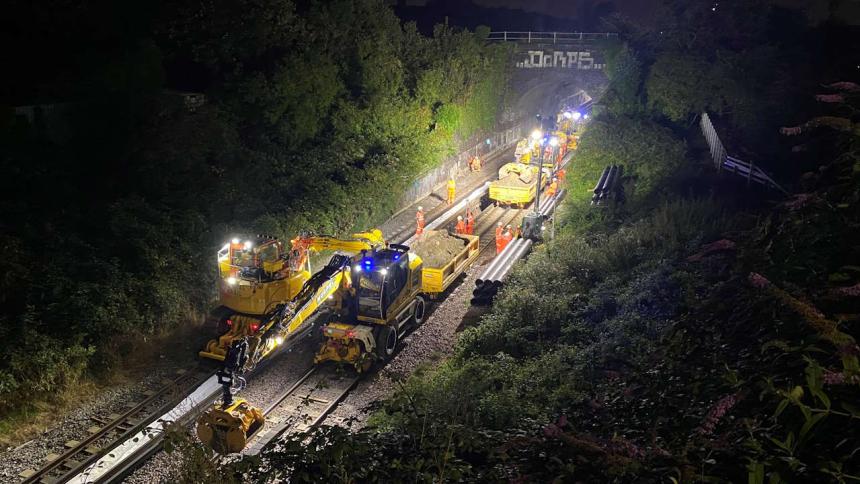A £29m rail overhaul in North London has been completed following a five-week line closure.
The five week closure enabled Network Rail and Transport for London (TfL) to work together to carry out major upgrades along a 20-mile stretch of railway. The project was supported by employing London Underground equipment, trains, drivers and resources. This is expected to lead to more reliable journeys between London Euston and Watford Junction for passengers using London Overground and the London Underground's Bakerloo Line.
Track, signalling and power supplies have all been overhauled while six stations have been upgraded. The improvements are expected to help tackle flooding and to reduce the number of power and signal failures which occur.
Meanwhile, essential weather proofing, platform resurfacing and the provision of tactile surfaces at stations will further enhance the confidence of passengers using both the Overground and the Bakerloo Line. Plants and trees have also been tidied up.
The work included replacing wooden sleepers laid down in the 1950s with 18,000 modern concrete ones as well as replacing 48km of signal cabling and upgrading the power supplies for trains.
Stations improvements were undertaken at Kensal Green, Harlesden, North Wembley, South Kenton, Headstone Lane and Watford High Street. Railway drainage along 1km of track between Harlesden and Stonebridge Park was upgraded in order to prevent future flooding.
The long closure followed similar work, which took place in December 2022 and February 2023 while the phased closure meant complex construction projects could take place simultaneously, rather than impose years of weekend closures and overnight working.
A time-lapse video captured by Network Rail's contractor Murphy shows some of the improvement work delivered during the 33 day closure of the railway.
James Dean, Network Rail's West Coast South route director, said: “Thanks again to passengers for their patience while we closed the railway so we could carry out these essential projects and improve future journeys between London Euston and Watford Junction.
“It enabled us to update sections of track with new equipment which is much more reliable so people can travel in confidence. We were also able to safely deliver work at six stations during this closure – which although may not be visually obvious to passengers from platform level – was important to protect the structures from bad weather.”
Rory O'Neill, TfL's general manager for London Overground, said: “We would like to thank customers again for their continued patience while Network Rail and TfL made these vital infrastructure improvements designed to increase train reliability and customer comfort. Our goal is always to provide our customers with the safest and most reliable service possible, and these major improvements will help to ensure we can do just that.”

I don’t understand the need for a forth rail on this track, which is entirely on the surface. If it is possible to design a dual voltage train that operates from overhead and third rail, it surely would be possible to design a trainset that could operate on third and forth rail track since the voltage is the same ?
The extra cost of installing a forth rail must be considerable.